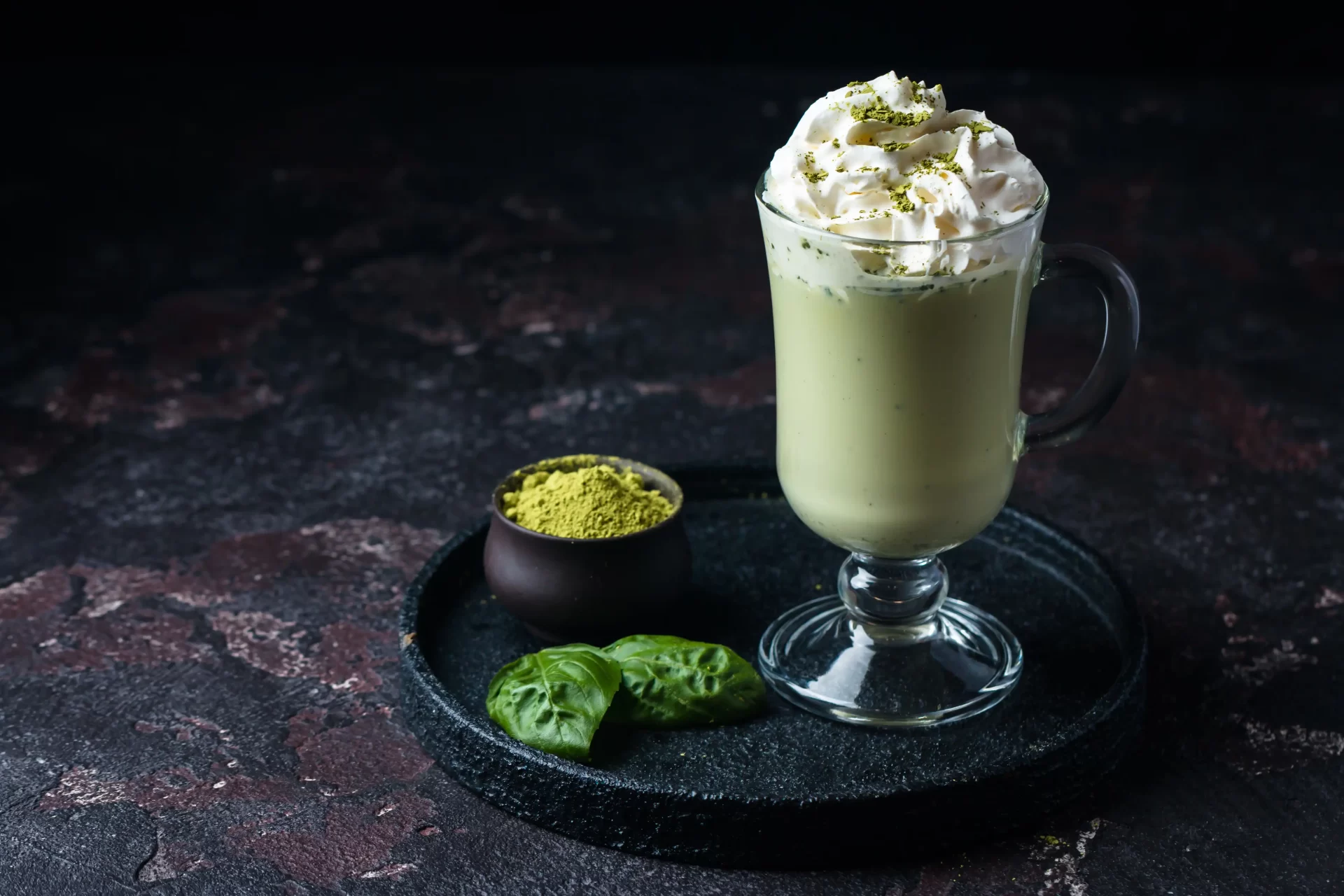Addicted to caffeine but you don’t want to use regular coffee or black tea due to the disadvantages they have? We have a better solution for you. Matcha, or Matcha latte, is a popular alternative to caffeinated beverages, made from a green tea powder with a rich tradition in Japan spanning over a thousand years. Latte Recipe is known for its numerous potential health benefits and distinctive flavor profile, making it globally widespread. If you are interested to know more about this magical hot drink and how to make matcha latte, stay with us in this blog.
The Origins of Matcha Latte
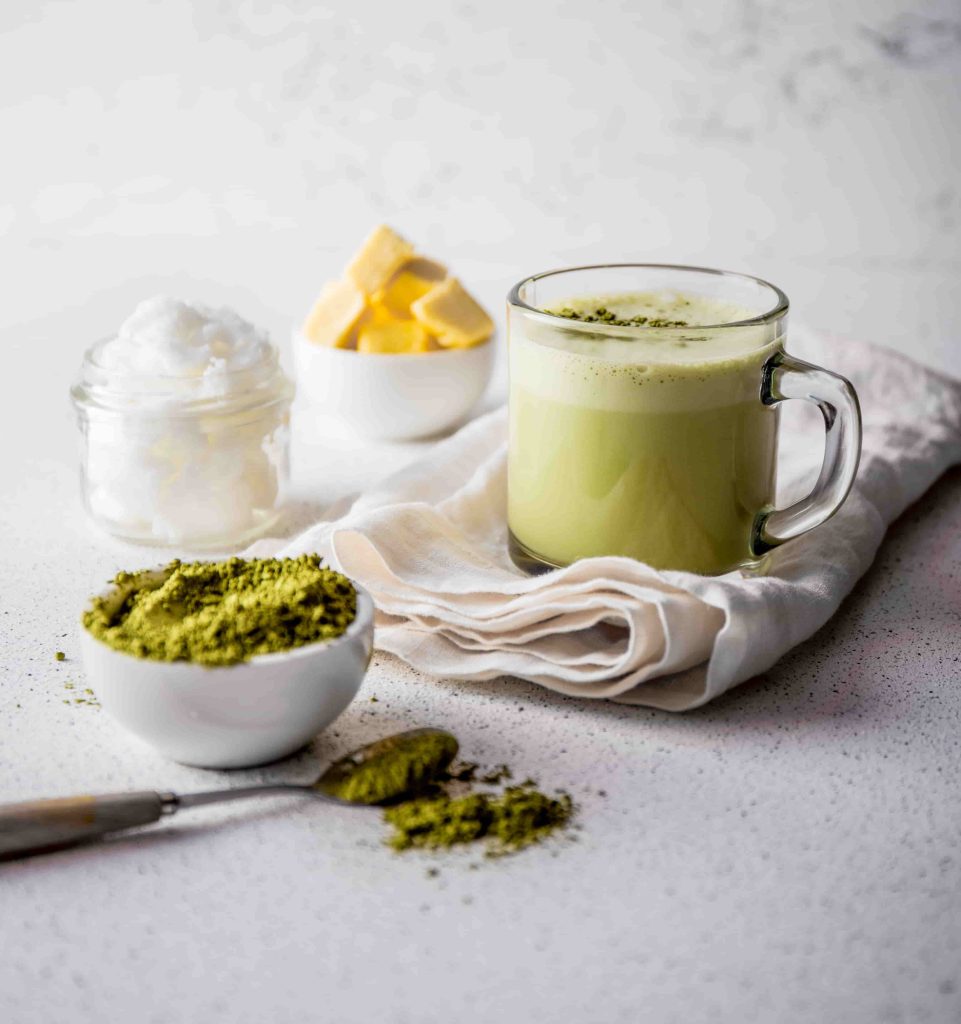
Matcha Latte is not just a trendy drink but has deep historical roots, dating back nearly a thousand years. Originating during the Tang Dynasty in China, tea leaves were steamed and compressed into bricks, which were then pulverized and mixed with water and salt. This tea preparation method became popular during the Song Dynasty. It was later brought to Japan in 1191 by Eisai, a Japanese Buddhist Monk, who introduced powdered green tea to Japan along with Zen Buddhist practices.
Matcha soon became a symbol of luxury and status, particularly among the Japanese elite. Zen Buddhists developed a cultivation method known as “tencha,” involving shading the tea plants to enhance the health benefits of matcha. This made matcha not only a prized beverage but also one associated with health benefits.
The ritual of matcha consumption evolved over time, and by the 1500s, Zen student Murata Juko formalized the tea ceremony, integrating the cultivation, preparation, and drinking of matcha into a sacred ritual. Zen Master Sen-no-Rikyu later popularized this tea ceremony, emphasizing four key principles: harmony, respect, purity, and tranquility. This ceremonial practice, known as Chado or Sado (“The Way of Tea”), remains integral to Japanese culture.
What is Matcha Latte? A Delicious Drink with Health Benefits
Matcha is increasingly popular in health stores and coffee shops, offered in various forms such as matcha shots, matcha latte, matcha teas, and matcha desserts. Like green tea, Matcha comes from the Camellia sinensis plant, but it is grown in a unique way that enhances its nutrient profile. The plants used for Matcha are shaded for most of their growth, boosting chlorophyll production and increasing amino acid content, which results in a darker green color. After harvesting, the leaves are ground into a fine powder, preserving all the nutrients of the entire tea leaf. This makes Matcha Latte and other Matcha drinks richer in caffeine and antioxidants compared to regular green tea. Research on Matcha benefits suggests it can support liver health, improve heart function, and assist with weight loss, making it a healthy latte option.
Here are 7 potential Matcha Latte Benefits to consider:
Rich in antioxidants
Matcha is packed with catechins, which are potent antioxidants that help stabilize harmful free radicals and protect cells from damage, potentially reducing the risk of chronic diseases. When consumed as a Matcha Latte, its antioxidant content may be even more beneficial, as matcha provides three times the antioxidants compared to regular green tea.
Supports liver health
Some studies suggest that Matcha Latte may help protect the liver by reducing liver enzyme levels, particularly in those with nonalcoholic fatty liver disease (NAFLD). While more research is needed, incorporating Matcha into your diet could support overall liver health.
Boosts brain function
Matcha benefits extend to brain health. The caffeine and L-theanine in Matcha Lattes can enhance focus, attention, and memory. One study showed that those who consumed matcha experienced improvements in cognitive function compared to a placebo group.
Potential cancer prevention
Matcha is high in EGCG, a catechin with anti-cancer properties. While further research is needed, some studies suggest that drinking Matcha may have protective effects against certain cancers.
Promotes heart health
Drinking Matcha, especially in the form of a Healthy Latte, may help promote heart health. Similar to green tea, matcha has been linked to a lower risk of cardiovascular disease and may help regulate blood pressure, offering heart health benefits.
Aids in weight loss
The compounds found in Matcha Lattes, similar to green tea, may help with weight loss. Research has shown that incorporating matcha into your diet, along with exercise, could aid in reducing body mass index (BMI) and promoting weight loss.
Easy and versatile preparation
Making a Matcha Latte is simple. Just mix matcha powder with hot water, milk, or plant-based milk. You can also experiment by combining it with turmeric, incorporating it into smoothies, or adding it to your favorite desserts, making it a versatile addition to your daily routine.
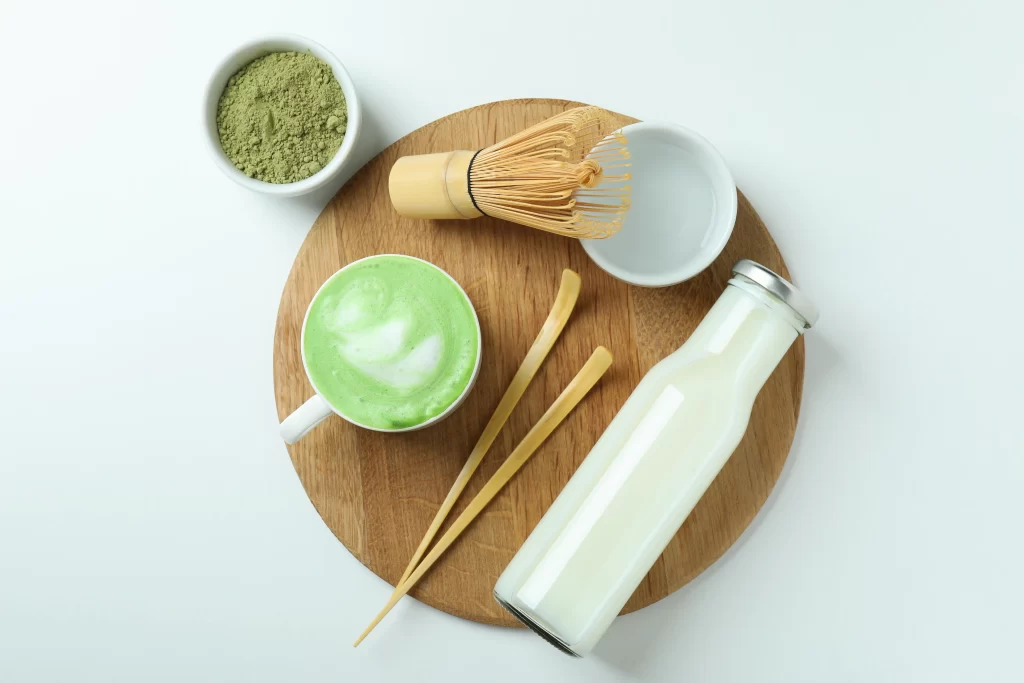
Matcha Latte: Flavor Profile
Matcha latte, a popular healthy latte option, offers a unique tasting experience and numerous benefits. The primary ingredient, matcha powder, delivers a complex flavor profile influenced by its cultivation and preparation process. High-quality matcha produces a smooth balance of vegetal, sweet, and umami flavors, which makes it a preferred choice for creating a delicious matcha drink or latte recipe.
The taste of matcha is often described as earthy and bittersweet, akin to dark chocolate or red wine. Matcha’s flavor complexity stems from the shaded growth phase before harvest, which enhances chlorophyll and amino acid content. These contribute to matcha’s distinct grassy notes, reminiscent of spinach, paired with a lingering sweet aftertaste and savory umami. While initially unfamiliar to some, matcha’s nuanced taste can become highly enjoyable with repeated exposure.
To make a matcha latte, using a well-balanced matcha blend is essential. Beginner-friendly blends like Superior Blend Matcha or Organic First Spring Blend help new drinkers ease into the flavor. A skilled tea master balances the bitterness, sweetness, and umami in matcha, ensuring a pleasant drinking experience. When prepared correctly, a matcha latte offers a smooth mouthfeel and a harmonious aftertaste that gradually shifts from sweetness to savory notes.
Conversely, poor-quality matcha or improper preparation can result in unpleasant bitterness or astringency. These issues highlight the importance of selecting good matcha and following a proper matcha latte recipe for optimal taste and enjoyment. By understanding matcha’s flavor profile and preparation, drinkers can fully appreciate the Matcha Latte Benefits and elevate their healthy latte experience with this sophisticated and nutritious drink.
Matcha vs Coffee: Which One is Better for Your Health?
Matcha latte, a popular matcha drink made by whisking powdered green tea into milk, offers a unique set of health benefits compared to coffee. Both beverages are rich in antioxidants, with coffee containing chlorogenic acid and matcha providing catechins, which help reduce harmful free radicals linked to chronic diseases like cancer and inflammation. Additionally, both drinks are known to fight fatigue, with caffeine being the active ingredient in both. However, matcha latte has the advantage of containing the amino acid theanine, which helps counteract caffeine’s jittery effects, making it a healthier alternative for those sensitive to coffee’s stimulating effects.
Matcha benefits include improved cognitive function, with studies showing it enhances focus and productivity better than coffee, thanks to its combination of caffeine and theanine. Matcha also supports metabolic health by improving cholesterol levels and reducing blood glucose. Moreover, matcha is linked to potential cancer prevention, particularly colorectal and gallbladder cancer, due to its high levels of EGCG, a potent catechin.
In terms of caffeine, matcha contains less per serving than coffee but still offers a steady energy boost. While coffee’s higher caffeine content may help alleviate fatigue more quickly, matcha’s caffeine, combined with theanine, provides a more sustained and smoother energy boost without the sharp crash that some people experience with coffee.
When comparing matcha latte vs coffee, matcha may be the better choice for individuals with acid reflux, low caffeine tolerance, or those who prefer a more balanced and longer-lasting energy boost. On the other hand, coffee may be more effective in reducing symptoms of depression due to its higher caffeine content.
How to Make Matcha Latte at Home: Easy Recipe & Tips
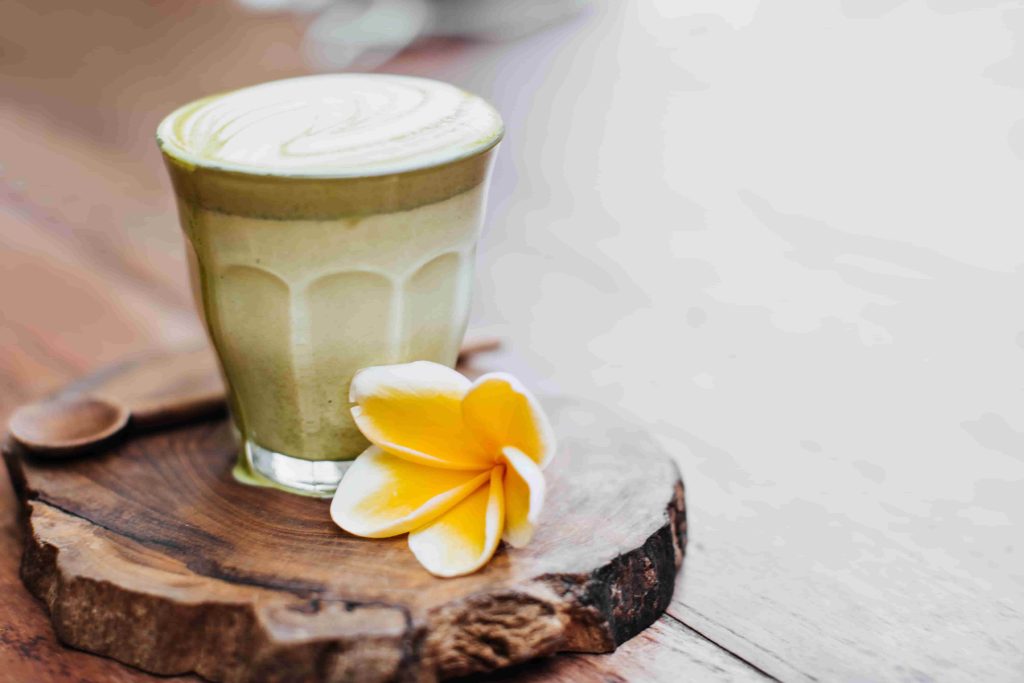
Matcha lattes are gaining popularity for their vibrant color, distinct flavor, and numerous health benefits. This guide offers two matcha latte recipes for making a perfect Matcha latte: the traditional recipe with a bamboo whisk and Matcha bowl, and a quicker version using an electric handheld frother. Both matcha latte recipes use Ceremonial Grade A Matcha, sourced from Japan, to ensure a high-quality experience.
To make a Matcha latte, start by sifting 1 teaspoon of Matcha powder into a bowl or mug. Add 2 ounces of hot (175°F) water and whisk until frothy. Next, heat 8 ounces of your choice of milk, then froth it. Combine the frothy milk with the Matcha mixture and add sweetener if desired. For a quicker version, simply use an electric frother to mix the Matcha and water, and froth the milk in a separate mug.
For an iced Matcha latte, prepare the Matcha mixture as usual, fill a glass with ice, and pour the frothy mixture over it. Add cold milk and sweetener, stir, and enjoy a refreshing drink.
Matcha lattes are versatile, allowing for flavor experimentation with sweeteners like honey or agave, and even fruit or spices like cinnamon. You can create unique lattes each time by adding vanilla, lavender, or caramel syrups. The type of milk you use—whether dairy or alternatives like almond, oat, or soy—affects the flavor and texture.
Making Matcha lattes at home offers benefits like cost savings and the ability to control sugar intake, making it a healthier choice. Homemade lattes allow you to choose the sweetener and customize the flavor, offering a healthier and more enjoyable alternative to store-bought options.
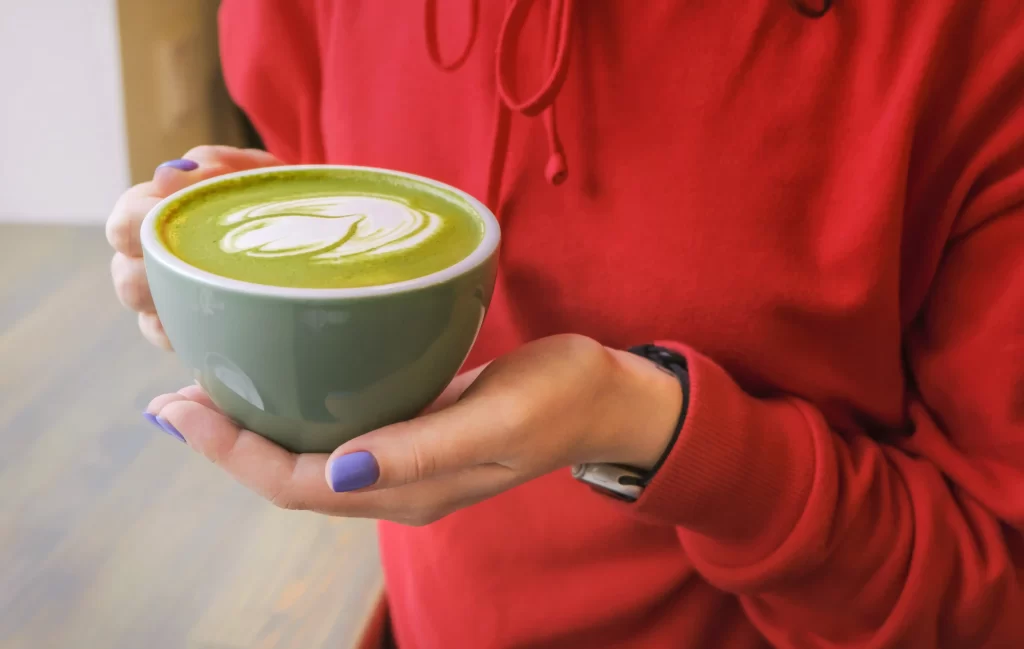
Matcha Latte: A Healthy Drink Packed with Nutrients and Bioactive Compounds
Matcha Latte Benefits include a low-calorie, nutrient-packed drink that offers a range of healthy properties. One serving (1 teaspoon) of matcha powder, used in a Matcha Latte, provides 3 calories, 1g of protein, and 1g of fiber, contributing 3% of your daily value. Though it contains few vitamins and minerals, the Matcha Drink is rich in bioactive compounds like L-theanine, quercetin, catechins, caffeine, and chlorophyll, all of which contribute to the Matcha Benefits for overall health. With its unique blend of ingredients, the Matcha Latte is a refreshing, healthy option.
5 Delicious Ways to Enjoy Matcha Latte and Unlock Its Health Benefits
Matcha latte is known for its earthy, slightly bitter taste balanced with a gentle sweetness, offering numerous ways to incorporate its benefits into your routine:
- Hot matcha drink: Prepare a traditional matcha tea by whisking ½ teaspoon of matcha powder with 4 ounces of hot water using a bamboo chasen (tea whisk) for an authentic matcha experience.
- Matcha lattes: Elevate your matcha tea by adding your preferred milk and sweetener to create a delicious hot or iced matcha latte, a perfect combination of flavor and matcha benefits.
- Matcha with oats: Boost your overnight oats by stirring in a scoop of matcha powder, adding a colorful and flavorful twist while reaping the benefits of matcha.
- Matcha-infused desserts: Incorporate matcha into your baked treats, like a Mini Pistachio Cakes, for a unique earthy-sweet flavor that’s both satisfying and delicious.
- Matcha smoothies: Blend matcha into your favorite smoothie to enjoy the matcha benefits in a refreshing way, or try a Whipped Matcha Fruit Smoothies topped with rich matcha foam for an indulgent treat.
Conclusion
Matcha latte offers a delightful combination of rich flavor, cultural history, and impressive health benefits. Whether you enjoy it hot, iced, or as part of your favorite recipes, it’s a versatile and nutritious alternative to traditional caffeinated drinks. Easy to prepare at home, this vibrant green drink can elevate your daily routine while supporting your well-being. Give matcha latte a try and savor the benefits of this timeless beverage!
References
- https://www.healthline.com/nutrition/7-benefits-of-matcha-tea
- https://www.health.com/coffee-vs-matcha-8697718?utm_source=chatgpt.com
- https://www.foodandwine.com/recipes/matcha-latte
- https://www.eatingwell.com/what-happens-to-your-body-when-you-drink-matcha-every-day-8681801?utm_source=chatgpt.com
- https://naokimatcha.com/blogs/articles/what-does-matcha-actually-taste-like#:~:text=As%20matcha%20is%20made%20from,to%20the%20shaded%20growth%20process.
- https://en.wikipedia.org/wiki/Matcha

